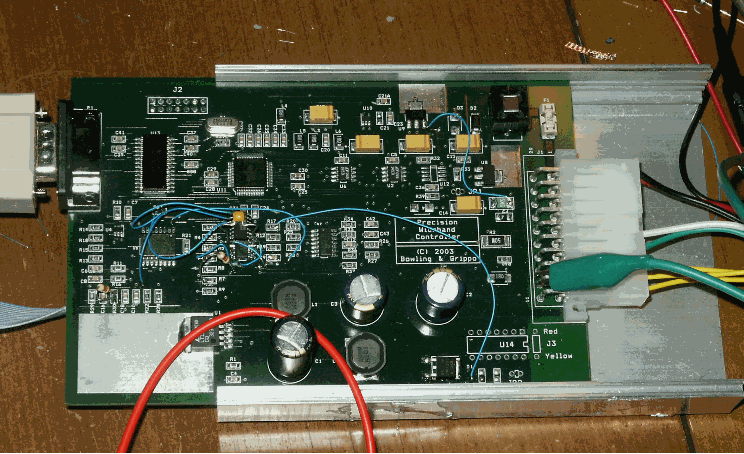 |
 |
The Precision Wideband Controller (PWC) is a controller board that provides an accurate exhaust gas oxygen feedback signal (to indicate the air/fuel ratio) from a wide band oxygen sensor.
The Precision Wideband Controller is a controller for wide-band lambda ( ) sensors (i.e. sensors which include a separate Nernst cell and oxygen pump cell).
) sensors (i.e. sensors which include a separate Nernst cell and oxygen pump cell).
The Precision Wideband Controller is designed to use the latest wide band oxygen sensor(s). This sensor, when driven by the Precision Wideband Controller's electronics, can measure the air/fuel ratio directly and accurately. Instead of switching back and forth from rich to lean like conventional "narrow band" exhaust gas oxygen sensor designs, the wide-band oxygen sensors produce a signal that is directly proportional to the air/fuel ratio produced by the fuel injection controller. Wide band oxygen sensors respond to changes in the air/fuel mixture in less than 100 milliseconds.
Features include:
The Precision Wideband Controller circuitry is on a separate printed circuit board (PCB) and can be used independently to provide AFR feedback control, drive an AFR monitor, feed a data-logger, or any other use you can think of for an accurate AFR signal. Two or more of them can be stacked to measure individual cylinders.
Bruce has evaluated both analog and digital pump loop control. The big factor that sways the design towards a digital solution is that the pump/Nernst response loop can be totally adjusted in software - becomes important because the pump/Nernst loop is temperature dependent. And, with enough computational horsepower and extremely fast sampling/control of the pump (up to 1 MHz if needed), different feedback loop implementations can be evaluated, from a simple "PID" construct, to a advanced predictor/corrector "Kalman filter" setup.
(One of the absolute best descriptions on the Kalman filter is in a book by Peter Maybeck. The first chapter is available on the web here:
If you read this, you will see the application to the pump/Nernst loop immediately. For example, everyone has seen the shape of the Nernst response (the "S" curve), where it is very sensitive near the stoichiometric point and relatively insensitive as you move away from this point - using a Kalman implementation, one can adjust the sigma (uncertainty) based on the point on the "S" curve is being used for that predictor value. Same goes with pump polarization effect.)
The importance of getting the pump/Nernst feedback correct is to prevent overshoots during transitions. An incorrect pump feedback loop will either tend to apply too much current to the pump (which shows up as erroneous spikes in the AFR) or not enough current (resulting in a slow-to-converge loop). And this is very, very, very temperature dependent - hard to adjust this with a hardware PID loop, simple w/ software. On a "meter" implementation, this effect may not be noticed or even worried about, but anything directly affecting the mixture in a cylinder-by-cylinder basis, transients which are not there are simply not wanted. Other effects like "polarization" of the pump cell (the reason why the response of many pump/Nernst loops are "twitchy" at the balance point, or tend to oscillate) can be corrected in software.
As for the circuit for pump control, the 'current' circuit uses two DAC channels, one for the pump and the other for the "virtual ground" (i.e. the common return of the Nernst/pump sensor). There are details on the rationale for this implementation on the PWC hardware page, but in a nutshell this configuration gives the widest possible pump currents (both polarity) and can keep the CMRR (Common-mode rejection) of the pump current measurement circuit in the best possible point (i.e. minimize op-amp bias currents differences b/w the two inputs) by using strategic DAC voltage settings. And since the one DAC is directly setting the voltage of the virtual ground, a simple ADC reading of the Nernst potential will give everything needed.

Note that the sensors will each have to be calibrated individually. The calibration set-up is quite expensive, however several people are planning to offer 'pre-calibrated' sensors to Precision Wideband Controller users.
Click on the following for more information on:
* We dedicate the Precision Wideband Controller to the memory of Garfield Willis. Garfield was instrumental in early research and development of the EGOR wideband controller.